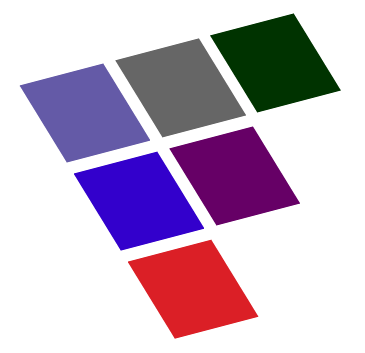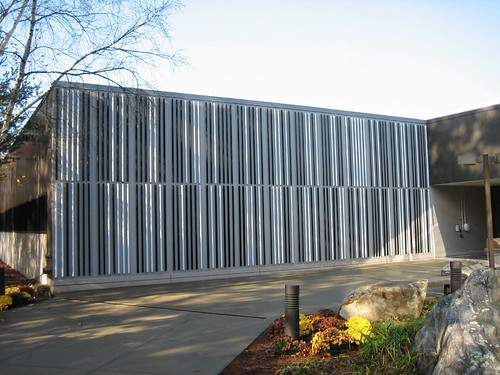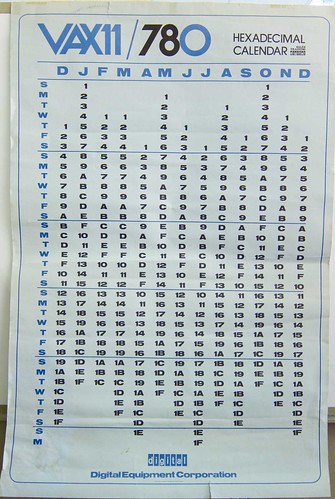It is a beautiful autumn day here in Southern New Hampshire. The air is clear and crisp, the sun is bright and the trees have (finally!) brought out some color, which I can see looking out the window near my cube. But soon, I will pack up the rest of my things and leave that view, and the cube, forever.
Don’t panic – I’m not going very far! Intel is moving us from our Nashua site to a new site in Merrimack, the next town to the north. The new place is said to be quite nice – I’ve driven past it and it is much closer to my home – but the 110 Spit Brook Road site in Nashua has a lot of memories. Yes, this is indeed going to be another retrospective post. If those annoy you, you can stop reading now.
I have a deep connection to this set of buildings. I’ve been here longer than anyone else, moving in with the VMS developers in July 1980. My fellow languages people did not show up until a couple of months later. Also, I had a hand in naming the conference rooms in the third building (added in 1986), and added an item (a copy of Charlie Andres’ CPU Wars) to the time capsule that was buried in the walkway outside the first building. (That capsule was to be dug up in 1996, but it was found to have let water in and the contents destroyed.)
In 1979, DEC decided that it wanted a dedicated software engineering site and broke ground in a heavily wooded section of south Nashua, off a street that changed to a dirt road just past the access road. Spit Brook Road was (and is) that street, and the name has been the subject of confusion and incredulity over the years. Variously misstated as “Spitbrook” or “Split Brook”, it is named after a small stream that runs through the woods. This part of Nashua has grown incredibly over the years, with shopping malls, restaurants, housing developments and traffic – lots of traffic. Needless to say, Spit Brook Road is now paved all the way down.
At the time, DEC used two-letter site codes. I was currently working at the Tewksbury, Massachusetts site, which, like many DEC sites, was a converted shopping center. Tewksbury was code TW, not unreasonably. The obvious choice for the new site was SB (variations on Nashua, such as NU or NS were already taken – DEC had three other Nashua sites), but the corporation had decided that it was going to reserve all future S codes for sales offices. For reasons that escape me, new sites were being given codes starting with Z, and the Spit Brook Road site got “ZK”. We all wanted to know what ZK stood for, and Joy Marshall, the VMS group admin, announced that it meant “Zonker Kookies”. And so it was. Shortly after that, DEC changed to three-character site codes and added the letter “O” to existing sites, so it was now ZKO.
A striking feature of the first building was the “barcode wall” at the main entrance. In its original form, the background was painted the same bright red-orange that VMS documentation binders were using, and on that was a set of 182 black and white bars, in thirteen groups of seven bars in two rows. If you interpreted the black bars as ones and the white bars as zeroes, they spelled, in ASCII:
digitalsoftwa
reengineering
Some years later, a manager decided on a different message. The background was repainted gray (the binder color now) and the bars rearranged to spell:
customers win
whenwedeliver
Amusingly, two of the bars in the lower row got switched so that two of the characters are wrong. It was never fixed. Here’s what it looked like in 2006. Click to get access to larger sizes.
Over the years, DEC’s software portfolio grew and so did the Spit Brook site. In 1982 a second building was added to the right, and in 1986, a third to the left. The languages group, among others, moved to “ZKO2”, and the VMS and UNIX groups moved to ZKO3. An interesting aspect of these buildings was that the ground floor for buildings 1 and 2 was in fact the third floor. The land dropped off behind the building, so you would go down to floors 2 and 1. Building 3 was built with four floors, and was oriented 90-degrees from the others. There you entered on the second floor. Behind the site, visible from the cafeteria, was a pond dubbed the “Non-Paged Pool” (another VMS joke).
Today, things are quite different. DEC gave way to Compaq, which was in turn swallowed by HP. Intel bought part of the languages group from Compaq and walled off our section of ZKO2. HP later moved everyone out and sold the site to a local real estate developer, who has brought in several other companies in various parts of the buildings.
So now we’re moving – and we are provided three plastic bins in which to place what we want moved. Many of us have been here for many, many years and have of course accumulated a lot of – um – stuff. I decided to be quite ruthless in determining what to keep and what to discard. Some things, such as the “VAX FORTRAN for ULTRIX Installation Guide” were easy to get rid of. Other things were not. I wanted to share with you a few of the things I chose to keep.
First up is this poster, which I saw displayed when I interviewed for DEC in August 1978. I loved it and when I got a chance to acquire a copy from a developer who was going to discard it, I grabbed it. It would have been good again in 2006, but I missed it. Next up is 2023.
Then there’s the red, white and blue “FORTRAN FOR PRECEDENT” campaign button, the lyrics to “VMS Superlate”, a skit put on by the VMS team back in, I think, 1984, in honor of the delays in getting the next version of VMS out the door. A sample (tune of “Jesus Christ, Superstar”):
VMS, Version Three
How much longer is it gonna be?
VMS, Superlate
Keep on coding, let the bastards wait
I also found my binders of SPRs (customer bug reports) from my early days on the VMS Run-Time Library. There was a special one I wanted to share with you here (PDF). Note that the customer rated this as “Priority 1 – Heavy System Impact”.
What really makes me feel old is realizing that I have coworkers who weren’t even born when I moved into Spit Brook in 1980. I’ve been here more than 30 years, and in the same cube since 1988. Lots of good memories and good products (VAX Ada! Digital Visual Fortran!) and some bad memories (layoffs, untimely deaths of coworkers (Simon Szeto, Lily Lanza, Dick Hustvedt)), but overall I’ll miss this place. Now we will make new memories at the new site, dubbed Heron Cove (the name of the office park it’s in.) And of course, lots of great new products!
(Originally posted at Intel Developer Zone, copied with permission)



Great article, I worked at ZKO1 for building services. (Facilities) I was the recycle coordinator that got this program off the ground. Couldn’t believe how much paper and cardboard thrown in the trash. Enjoyed my my six years there (1988-1994)
Hi Andy! I remember you…
Hi Steve! I never knew the ZK story (I had heard other versions). Did there end up being a lot of “S” sales offices?
Hi Burns! If there were any additional ‘S’ sales offices, I didn’t hear of them. It wasn’t long afterward that the shift to three-letter site codes came along.
Have you been using your 1978 VAX hex calendar this year?
Not yet – thanks for the reminder.